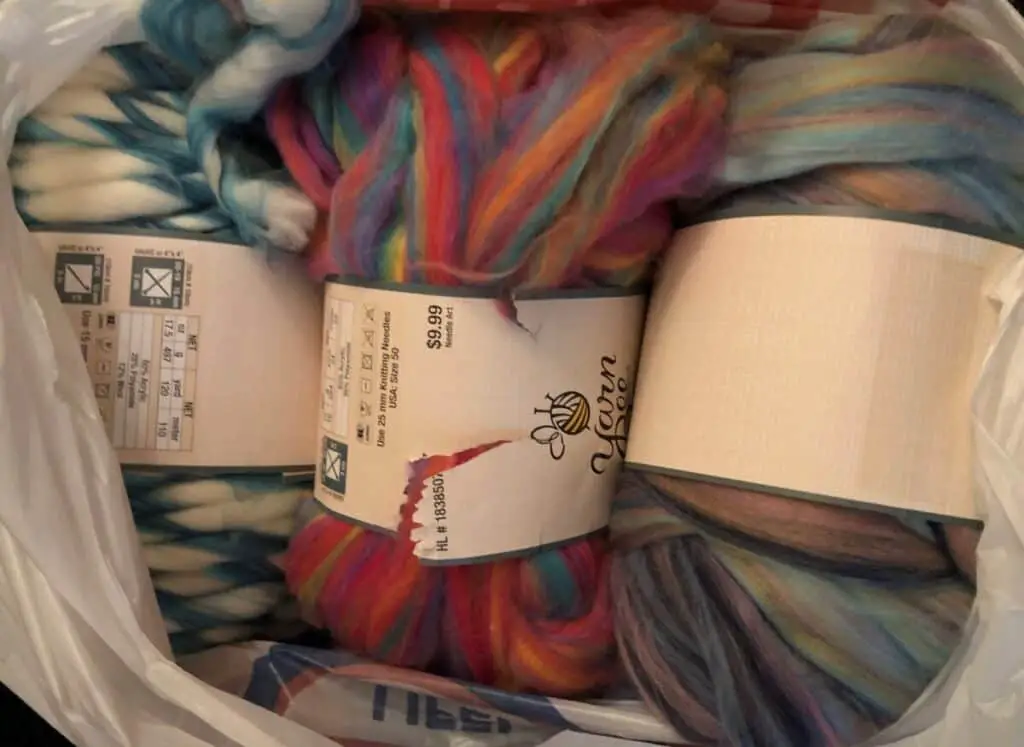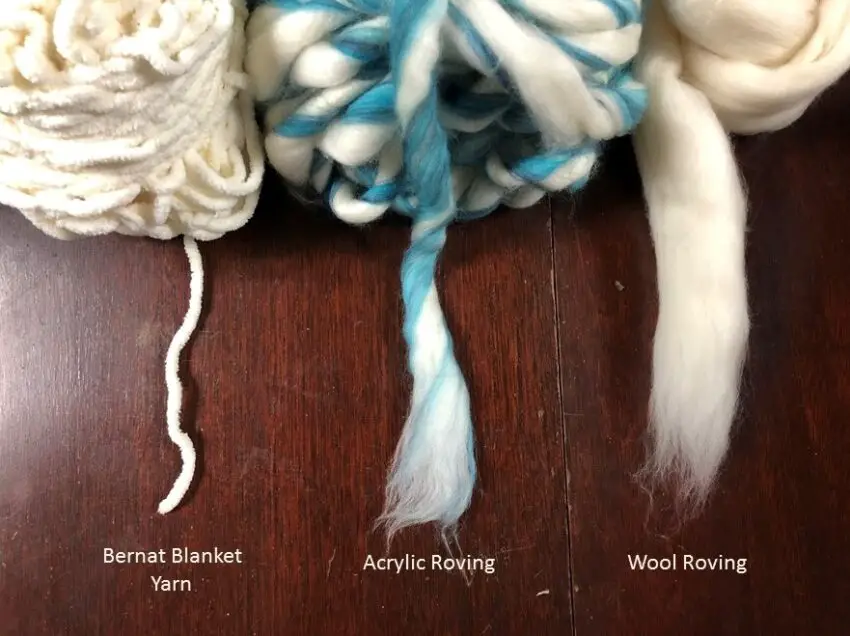Roving or hand-knit blankets are a pretty popular craft idea right now. These blankets use something called roving yarn. If you’re planning on making one of these blankets, you might be wondering if roving yarn is soft?
Roving yarn is usually very soft but it sometimes depends on what the roving yarn is made out of. Some materials are softer than others.
Throughout this post, we’ll talk about what types of roving yarn are the softest, what roving yarn is, and how to prepare your roving yarn for use. Let’s get going!
Table of Contents
Is Roving Yarn Soft?

Roving yarn is usually very soft, but, just like everything, it depends a little on what it’s made out of.
I have seen thick roving yarns make of wool, acrylic, plant fibers, and combinations of all three.
Wool roving is the most abundant and the softest. If you normally find wool yarn scratchy, wool roving will be softer than you expect. This is because of the way that wool yarns are made and the way wool roving is made.
Wool yarn has a lot of twist in it which holds all the fibers of wool together. Because the twist holds the yarn together, manufacturers can use shorter wool fibers to create it.
These shorter fibers will stick out all over the yarn which is part of what makes wool yarn prickly and itchy.
Roving yarn, on the other hand, has little to no twist. Because it doesn’t have twist, it relies on the friction between the fibers to hold it together.
This means that the roving has to have longer fibers to get the most friction possible. Longer fiber means softer yarn.
A good rule of thumb is the thicker the yarn, the softer the yarn.
When you get blends of wool with other fibers, these other fibers create a medium that can hold the wool fibers together. This makes it so that they can use shorter wool fibers which can make the roving more prickly.
If you want a soft roving yarn, go for a non-blended roving, 100% wool or 100% acrylic, and a thick roving with a small amount of twist.
This will usually give you the magical recipe for super soft roving yarn.
Now, let’s talk a little about what roving yarn even is.
What is Roving Yarn?
The label ‘roving yarn’ is used to describe many different types of yarn. Usually, when I think of roving yarn I think of the yarn that is basically just roving, a strip of wool or other fiber that’s about as thick as your wrist.
However, roving yarn is also used to describe much thinner yarns as well.
In general, companies use the term roving yarn to describe a single-ply yarn (sometimes called a singles yarn) that is thicker than usual. Here’s an example of some different roving yarns.

Let’s talk a little about the really thick roving yarns first. In my opinion, these yarns are not really yarn, they are roving.
Now, in the spinning world, roving describes wool (or some other kind of fiber) that’s been prepared into strips for the purpose of spinning it into yarn.
This roving doesn’t have any twist in it. Because of this, the roving will shed and pill, not exactly desirable for a project.
The thick singles yarn (a thinner version of the roving yarn), does have twist in it. This twist is what makes yarn, yarn. That’s why, in my opinion, the thick roving yarns aren’t actually yarns.
There is a way to prepare thick roving yarn that will help prevent pilling and shedding. We’ll talk about that in the next section.
I’ll admit, I am a little biased against using roving as yarn. Because I’m a spinner and I spin yarn out of roving, using roving as yarn just seems like a waste to me. I’d much rather use it to spin more yarn! But, I digress, to each their own!
Despite not having twist, using this thick roving as yarn has become increasingly popular to create thick, chunky items like pillows and blankets.
So, if this roving doesn’t have twist and basically falls apart, how do you make stuff with it? Well, let’s move on to the next section and talk about what to do to prep your roving yarn for use.
How to Prepare Roving Yarn
If you want to make a big, chunky, arm-knit blanket, then you need to know how to make your roving stronger and more durable.
However, this will only work with wool roving, not acrylic. It also won’t work as well for wool blended with other fibers.
What you want to do is lightly felt your wool roving. I know, I know, normally you avoid felting wool yarn like the plague. But, there is a time and place for felting.
Felting the roving will help keep the pilling and the shedding to a minimum because the fibers will be stuck to one another. And, just lightly felting the roving won’t change the softness or look it will, however, shrink slightly.
Here’s a video that shows the best method for lightly felting wool roving.
Remember, this only works for wool, any other kind of roving won’t felt because it doesn’t have the same structure as wool.
Also, arm knitting isn’t exclusive to roving yarn. You can use several strands of other yarns to create arm knitting. The possibilities are endless!
If you’re wanting to make something with arm knitting but aren’t sure what, here are some project ideas for arm knitting.
Wrap up
We’ve been on a fiber-filled journey, let’s make sure you gathered all the info you need to have a successful project.
Thick roving yarn, roving yarn that has a small amount of twist, and roving that is not blended with other fibers will make the softest rovings.
Roving yarn is used to describe thick roving with no twist as well as singles yarn that has been twisted into yarn.
If you want to use roving yarn that has no twist to arm knit, you need to felt it slightly before using it in order to prevent pilling and shedding.
Hopefully, I answered your question and gave you some good project ideas!
Now, go make something awesome!

